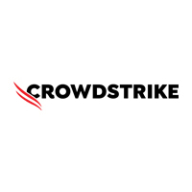

CrowdStrike Falcon and Deep Instinct are prominent competitors in the cybersecurity sector, focusing on threat detection and endpoint security. Based on feature comparisons, CrowdStrike Falcon takes the lead due to its robust EDR capabilities and minimal system impact, though Deep Instinct is notable for its high detection accuracy and low false-positive rates.
Features: CrowdStrike Falcon is renowned for its real-time threat detection, EDR feature, and ability to protect without constant scanning, optimizing system performance. Deep Instinct is highlighted for its advanced deep learning models, high accuracy, and effective malware classification, all contributing to its reliable protection.
Room for Improvement: CrowdStrike Falcon can enhance report functionalities, integration with other technologies, and support for legacy systems. Users have indicated challenges with the dashboard and some missing security features out-of-the-box. Deep Instinct could improve documentation, add firewall features, and refine its deployment processes and analytics for better incident investigation.
Ease of Deployment and Customer Service: CrowdStrike Falcon is praised for easy deployment in cloud environments and across various operating systems, with technical support being responsive and knowledgeable. However, some users find recent interface changes challenging. Deep Instinct offers straightforward deployment but could improve its multi-tenant capabilities and administrative experience. Both have robust support, though Deep Instinct’s support is sometimes seen as less personal.
Pricing and ROI: CrowdStrike Falcon is considered costly but provides significant value due to increased efficiency and strong security. ROI is achieved through reduced downtime and increased productivity, with pricing based on selected features. Deep Instinct offers competitive pricing with a comprehensive licensing model covering various endpoints, noted for reducing administrative overhead and effective threat prevention.
CrowdStrike Falcon saves time and offers good value for money, especially for enterprise companies, because it can stop breaches.
It's very easy to deploy without many IT admins, saving time.
On a scale of one to ten, I would rate the technical support as a 10 because they resolve many issues for us.
The CrowdStrike team is very efficient; I would rate them ten out of ten.
They could improve by initiating calls for high-priority cases instead of just opening tickets.
Technical support from Deep Instinct Prevention Platform is fantastic.
The support needs to be more granular, and perhaps they can consider using AI to help us ask questions instead of searching for specific keywords.
It has adequate coverage and is easy to deploy.
In terms of scalability, I find CrowdStrike to be stable, and I have not encountered any limitations with it.
There's no scalability limitation from CrowdStrike itself, as it just requires agent deployment.
The biggest customer has 50,000 instances, so it scales very well.
I have never seen instability in the CrowdStrike tool.
We are following N-1 versions across our environment, which is stable.
The biggest issue occurred when every computer worldwide experienced a blue screen.
Simplifying the querying process, such as using double quote queries or directly obtaining logs based on IP addresses or usernames, would be beneficial.
Another concern is CrowdStrike's GUI. It changes annually, making it hard to work and find options.
Threat prevention should be their first priority.
Deep Instinct Prevention Platform detects malicious scripts but it needs better measures, perhaps signing scripts, so we can be sure that a script is created by a client, not by some malware.
It is expensive compared to SentinelOne, but as the market leader, it is worth it.
The licensing cost and setup costs are affordable.
The solution is a bit expensive.
The licensing is very competitively priced, better than all other solutions.
It is about the same price as any other antivirus.
I can investigate by accessing the customer's host based on the RTR environment and utilize host search to know details for the past seven days, including logins, processes, file installations, malicious processes, and network connections.
The real-time analytics aspect of CrowdStrike performs well because we get all logs in real-time, with no delay, allowing us to take action immediately.
Being an EDR solution, it helps us identify attacks in real-time.
Deep Instinct Prevention Platform stops all malware, including zero-days in 20 milliseconds.
| Product | Market Share (%) |
|---|---|
| CrowdStrike Falcon | 7.4% |
| Deep Instinct Prevention Platform | 0.8% |
| Other | 91.8% |


| Company Size | Count |
|---|---|
| Small Business | 46 |
| Midsize Enterprise | 34 |
| Large Enterprise | 62 |
| Company Size | Count |
|---|---|
| Small Business | 11 |
| Midsize Enterprise | 4 |
| Large Enterprise | 5 |
CrowdStrike Falcon offers robust endpoint protection and threat detection, leveraging cloud-native architecture and AI-driven capabilities for advanced security. Its design ensures minimal system impact, making it a preferred choice for organizations seeking efficient protection solutions.
CrowdStrike Falcon provides comprehensive security features, including endpoint detection and response, real-time threat insights, and advanced AI-driven detection mechanisms. Its cloud-native architecture facilitates effortless scalability and seamless integration with cloud services, securing endpoints, servers, and roaming users. While Falcon delivers strong threat intelligence and automated detection, it faces challenges in operating system compatibility, reports require enhancements, and integration with some technologies is limited. High pricing and occasional false positives are noted areas for improvement, along with expanded support for older systems.
What are the key features of CrowdStrike Falcon?In industries requiring fortified cybersecurity measures, CrowdStrike Falcon is deployed for endpoint protection and incident response. It offers advanced threat defense and integrates well with cloud services, making it a suitable replacement for traditional antivirus solutions. For sectors engaging in forensic investigations and real-time malware defense, Falcon's capabilities align with their security demands, serving industries from healthcare to finance.
Deep Instinct PREVENTS >99% of UNKNOWN threats like ransomware and zero-days before they land inside your environment – not after. With both an agentless and agent-based approach, we ensure file-based and fileless attacks are prevented. To achieve this, Deep Instinct is pioneering the use of deep learning AI to prevent threats in <20ms, without requiring calls to the cloud for threat intelligence. Our ability to scale to the needs of the enterprise is unprecedented as is our delivery of the industry’s lowest false positive rate of <0.1%.
The Deep Instinct Prevention Platform combines industry-leading static analysis based on the only deep learning framework dedicated to cybersecurity and includes two solutions:
To learn more, visit: https://www.deepinstinct.com.
We monitor all Endpoint Protection Platform (EPP) reviews to prevent fraudulent reviews and keep review quality high. We do not post reviews by company employees or direct competitors. We validate each review for authenticity via cross-reference with LinkedIn, and personal follow-up with the reviewer when necessary.